Search
Did you mean: The Dagda?
Search Results
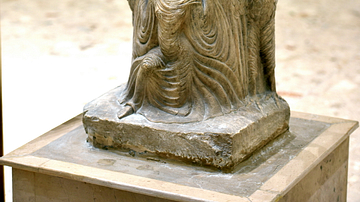
Image
Statue of Assur Bel from Hatra
This limestone statue, now headless, was found in the 5th temple, and probably depicts Assur. On the other hand, some scholars thinks this statue is of Za'im Mu'la. It depicts a male figure wearing full military attire and armor (very similar...
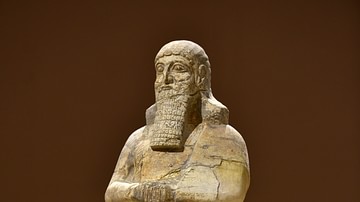
Image
Kurba'il Statue of Shalmaneser III
Kurba'il statue of Shalmaneser III (r. 858-824 BCE), found in Fort Shalmaneser in 1961 by the British School of Archaeology in Iraq. The statue originally stood in the Temple of Adad at the city of Kurba'il, north of modern-day Mosul...
![Warka Vase [Middle Register]](https://www.worldhistory.org/img/c/p/360x202/10597.jpg?v=1599154203)
Image
Warka Vase [Middle Register]
The votive or sacred Warka Vase is decorated with three horizontal registers and shows signs of repair in antiquity. The middle register depicts a procession of naked male figures carrying bowls and jars of sacrificial elements, such as fruit...
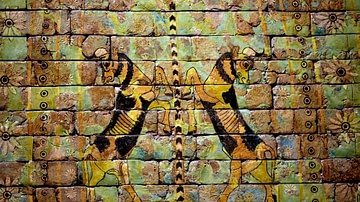
Image
Glazed Wall Panel from Fort Shalmaneser
Detail of a large wall panel of vibrant glazed bricks once placed above the entrance to a vast room (T3) next to Shalmaneser III's throne room. The whole panel is composed of about 300 bricks and is 4 meters in length; this detail at the...

Image
Statue of a Military Commander from Hatra
This is a limestone statue of a high-ranking military commander of the army. He wears his military uniform and holds in both hands what appears to be a statue of a deity. His name is unidentified. It was found in the 4th temple at Hatra...
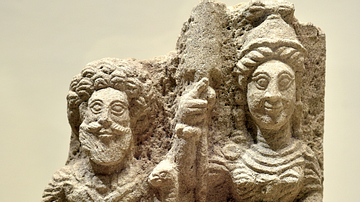
Image
Goddess Al-Lat and an Elderly God from Hatra
This limestone slab carved in relief shows two deities. On the right, the goddess Al-Lat is depicted, she wears a military dress and helmet and holds a spear in her right hand and a shield in her left arm. Her appearance is similar to Athena...
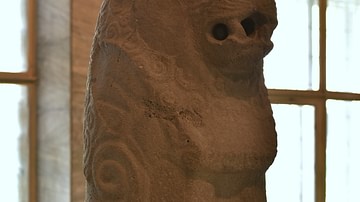
Image
Lion Statue from Eridu
One of a pair of lions which once stood at the gate of the ancient Sumerian city of Eridu (Tell Abu Shahrain) to guard the city's entrance. The lion was carved from black basalt. From Eridu, Southern Mesopotamia, in modern-day Iraq. Mid-3rd...
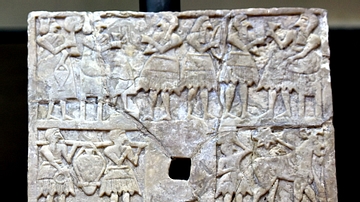
Image
Sumerian Votive Plaque from Khafajah
This limestone plaque was excavated by the Oriental Institute of the University of Chicago in the early 1930s, 1st season. It depicts three scenes in three registers. The upper register shows a banquet scene with musicians. The middle register...
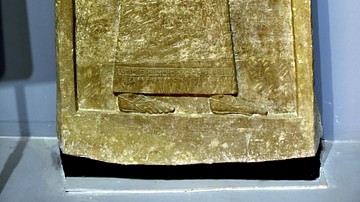
Image
Stele of Adad-Nirari III
Limestone stele of the Assyrian king Adad-Nirari III (r. 810-783 BCE) from Tell al-Rimah, in modern-day Nineveh Governorate, Iraq. The king is praying before gods and goddesses symbols. The cuneiform inscriptions mention the king's titles...
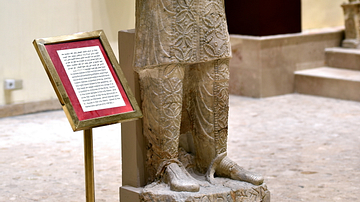
Image
Statue of Sanatruq I from Hatra
This is, a little bit larger than a life-size, marble statue of Sanatruq I (reigned c. 140 - 180 CE), king of Hatra. The king wears an exquisitely carved dress and a headdress of an eagle. His right hand is raised in salutation while the...